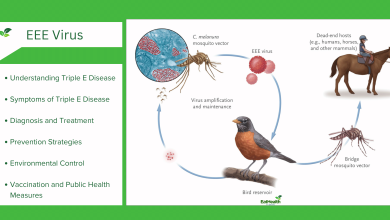Latest Advances in Diabetes Treatment Options
Revolutionizing Diabetes Care: Cutting-Edge Treatments for Better Health

Latest Advances in Diabetes Treatment Options
Diabetes is a chronic condition that affects millions of people worldwide. It occurs when the body either cannot produce enough insulin or cannot effectively use the insulin it produces, leading to high blood sugar levels. While there is no cure for diabetes, significant advancements have been made in its diabetes treatment options in recent years. This article will explore the latest advances in diabetes treatment, from new medications to innovative technologies, providing valuable insights for both high school students and healthcare professionals.
Understanding Diabetes
Before delving into diabetes treatment options, it’s essential to understand the different types of diabetes and how they affect the body.
Types of Diabetes
- Type 1 Diabetes: This type occurs when the immune system mistakenly attacks and destroys insulin-producing cells in the pancreas. People with type 1 diabetes require insulin injections or an insulin pump to manage their blood sugar levels.
- Type 2 Diabetes: Type 2 diabetes develops when the body becomes resistant to insulin or does not produce enough insulin to maintain normal blood sugar levels. It is often linked to lifestyle factors such as obesity, lack of physical activity, and poor diet. Treatment may involve lifestyle changes, oral medications, or insulin therapy.
- Gestational Diabetes: This type occurs during pregnancy and usually resolves after childbirth. However, women who develop gestational diabetes have an increased risk of developing type 2 diabetes later in life.
Advances in Diabetes Treatment
Over the years, research and innovation have led to significant advancements in diabetes treatment, improving the lives of those affected by the condition. Here are some of the latest developments:
1. Continuous Glucose Monitoring (CGM) Systems
CGM systems provide real-time information about blood sugar levels, allowing individuals with diabetes treatment to monitor their glucose levels more closely. These devices use a tiny sensor inserted under the skin to measure glucose levels in the interstitial fluid. The data is transmitted wirelessly to a receiver or smartphone, providing instant feedback and alerts for high or low blood sugar levels.
2. Insulin Pump Therapy
Insulin pump therapy, also known as continuous subcutaneous insulin infusion (CSII), has become increasingly popular as a treatment option for type 1 diabetes. These small, wearable devices deliver insulin continuously throughout the day, mimicking the body’s natural insulin secretion. Advanced pumps now feature automated insulin delivery systems that adjust insulin doses based on CGM data, providing more precise control of blood sugar levels.
3. Artificial Pancreas Systems
Artificial pancreas systems combine CGM technology with insulin pump therapy to create a closed-loop system that automatically regulates insulin delivery based on glucose levels. These systems, also known as closed-loop insulin delivery systems, aim to mimic the function of the pancreas more closely, reducing the risk of hypo- and hyperglycemia. Just as we know Natural Ways to Control Diabetes
4. Implantable Insulin Delivery Systems
Implantable insulin delivery systems offer a more discreet and convenient alternative to traditional insulin pumps. These devices are implanted under the skin and deliver insulin directly into the bloodstream, eliminating the need for external infusion sets or tubing. While still in the early stages of development, implantable insulin delivery systems hold promise for improving insulin therapy adherence and quality of life for individuals with diabetes.
5. Medication Advances
In addition to advancements in insulin delivery technology, several new medications have been approved for the diabetes treatment. These include:
- GLP-1 Receptor Agonists: These medications stimulate the release of insulin and suppress glucagon secretion, leading to lower blood sugar levels. They also promote weight loss and have been shown to reduce the risk of cardiovascular events in people with type 2 diabetes.
- SGLT-2 Inhibitors: SGLT-2 inhibitors work by blocking the reabsorption of glucose by the kidneys, leading to increased glucose excretion in the urine. They also lower blood pressure and reduce the risk of heart failure in people with type 2 diabetes.
- DPP-4 Inhibitors: DPP-4 inhibitors prevent the breakdown of incretin hormones, which stimulate insulin release in response to meals. They help lower blood sugar levels without causing hypoglycemia and are often used in combination with other diabetes medications.
6. Gene Therapy
Gene therapy holds promise as a potential cure for type 1 diabetes. Researchers are exploring ways to modify the genes responsible for autoimmune destruction of insulin-producing cells in the pancreas, potentially restoring insulin production and reversing the underlying cause of the disease. While still in the experimental stages, gene therapy could revolutionize diabetes treatment in the future.
Integrating Technology and Lifestyle
While these advancements offer new options for managing diabetes, it’s essential to remember the importance of lifestyle factors in diabetes management. Healthy eating, regular physical activity, stress management, and proper medication adherence all play crucial roles in controlling blood sugar levels and reducing the risk of complications.
Tips for Healthy Living with Diabetes
- Balanced Diet: Focus on whole foods such as fruits, vegetables, lean proteins, and whole grains. Limit processed foods, sugary beverages, and high-carb snacks.
- Regular Exercise: Aim for at least 30 minutes of moderate-intensity exercise most days of the week. Choose activities you enjoy, such as walking, cycling, or swimming.
- Medication Adherence: Take your medications as prescribed by your healthcare provider. Follow insulin dosing instructions carefully and monitor your blood sugar levels regularly.
- Stress Management: Practice relaxation techniques such as deep breathing, meditation, or yoga to reduce stress levels and improve overall well-being.
- Regular Monitoring: Keep track of your blood sugar levels, diet, exercise, and medication regimen. Use technology such as CGM systems or smartphone apps to monitor trends and make adjustments as needed.
Conclusion
The field of diabetes treatment continues to evolve rapidly, with advancements in technology, medication, and research offering new hope for individuals living with the condition. From continuous glucose monitoring systems to artificial pancreas systems and gene therapy, the future of diabetes care looks promising. However, it’s essential to remember that successful diabetes management requires a holistic approach that integrates medical treatment with healthy lifestyle habits. By staying informed about the latest diabetes treatment options and making positive choices in diet, exercise, and stress management, individuals with diabetes can lead fulfilling and healthy lives.




